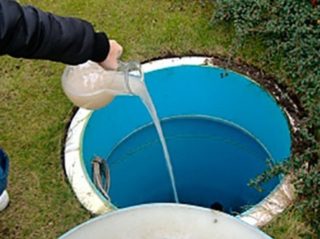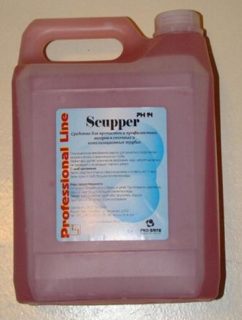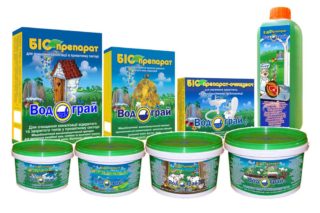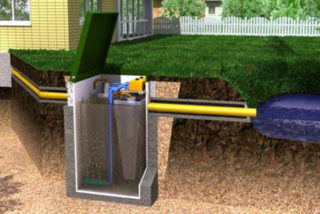Sooner or later, in a private house that is not connected to the central sewerage and sewerage system, it becomes necessary to clean the cesspool. It is not always possible to maintain it with the help of flushers, so the owners are faced with the question of alternative cleaning methods.
When to clean the pit
- the appearance of a fetid odor;
- accumulation of silt-like mass on the bottom and walls;
- accumulation of insects over the drain hole;
- slow outflow of water in the plumbing, supplied to the pit.
In general, a pit with a volume of up to 2 cubic meters can be used without cleaning for several years, however, it is much easier to eliminate small volumes once a year than large ones - once every five years. Carrying out preventive cleaning will extend the life of the cesspool several times.
Cleaning methods without pumping
If it is not technically possible to fit a sewage machine, cleaning can be done in the following ways:
- using chemical reagents;
- with the use of bioactive drugs;
- folk methods.
Each method has its own pros and cons, and the choice is entirely up to the owners of the private home.
For the disposal of waste in cesspools, formaldehyde and quicklime were previously used. Currently, they are prohibited for use due to their high toxicity, and more modern and relatively safe drugs have come to replace them:
- ammonium compounds are inexpensive, but toxic to the environment. Their use is not recommended for metal cesspools due to the high risk of metal destruction. Clarified sewage water still needs to be removed and disposed of. The presence of household chemicals in wastewater significantly reduces the activity of this group of chemicals.
- nitric oxidants are considered the most environmentally friendly. A significant disadvantage is the high cost. Their effect is not reduced in the presence of household chemicals and food waste in the cesspool. They decompose biological inclusions and sediments, neutralize unpleasant odors and destroy the shells of the larvae of harmful insects.
- acid cleaners are suitable for metal closed cesspools. In their action, they are similar to nitrogen oxidants - they decompose sludge masses, solid waste, plastic, are not sensitive to the remains of cleaning and detergents. Kills bacteria and insects, thereby eliminating the cause of the offensive odor.
Chemical reagents are used most often in the cold season, as they are not afraid of low temperatures and sudden temperature changes. Available in various forms - in the form of liquids, powders, tablets, granules. Powders are suitable for dilution with water and drainage through plumbing, tablets and liquid forms are placed directly into the sump.
The bacteria that make up biological products are subdivided into aerobic and anaerobic. Aerobic bacteria require oxygen supply and act mainly on the surface of the pit. Anaerobic ones are used for sealed cesspools and carry out their activities in the thickness of the waste.
Biological products operate in a certain temperature range from +5 to +30 degrees, and are suitable for use exclusively in the warm season. In hot weather, the cesspool with biological products must be shaded to avoid the death of colonies. Another disadvantage of this method is the need to regularly renew the colony by adding drugs to the wastewater. In addition, some types of bacteria are sensitive to the presence of chlorine and household chemicals in the water.
Traditional methods Sump cleaning involves adding sawdust, tomato tops, or nettles to the pit. Wood sawdust and peat absorb the liquid component, but such holes need mechanical removal of the resulting contents. The introduction of tops or nettles fights odor, but does not contribute to mechanical waste disposal.
How to reduce the frequency of cleaning the cesspool
It is important to carry out proper thermal insulation of the cesspool and sewerage system in order to avoid freezing of waste and damage to the immediate drainage pipes.
The use of biological products will reduce the frequency of mechanical cleaning of the pit and septic tank.
It is impossible to completely replace the mechanical cleaning of cesspools - solid and silt deposits will accumulate and need to be removed from the cesspool. However, the use of chemicals and biological products will significantly reduce the frequency of the procedure and extend the life of the cesspool or septic tank. So far, there is no complete alternative to pumping and mechanical cleaning of the pit.













Thank you very much, very helpful information. I am faced with the problem of septic tank siltation. Thank you.
thank you very much, I just have this problem
The topic is necessary, I will try, Thank you
Thank you so much!!
I have been using the Tank-2 septic tank for 5 years. For the money, for construction, a little expensive. But it has already paid off. The first three years did not look at all. A smell appeared. And now, once a year, in the spring, when the groundwater rises, I pump it out with a machine. I use BIOFORCE septic “Toilet without smell”. There are 12 powders in the jar, enough for a year. Once a month, I dilute it in a bucket with warm water and pour it through the toilet